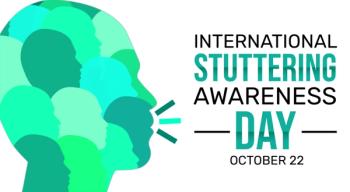
- Vol 39, Issue 8
What Are Clinicians Missing About Catatonia?
An estimated 5% to 10% of acute psychiatric inpatients have catatonia—yet catatonia remains widely underdiagnosed.
CLINICAL REFLECTIONS
An estimated 5% to 10% of acute psychiatric inpatients have catatonia, with a growing body of literature describing catatonia in acute medical settings as well.3 Despite the prevalence of catatonia and its clinical impact, catatonia remains widely underdiagnosed. In fact, 2 separate studies found that roughly only 1 in 10 cases of catatonia was recognized by psychiatric inpatient treatment teams.4,5 Although several factors likely play a role, we believe that a widespread lack of understanding catatonia’s clinical diversity may be a large reason catatonia so often goes undiagnosed.
To explore this possibility, we collaborated with Andrew Francis, MD, PhD, senior author of the Bush-Francis Catatonia Rating Scale (BFCRS). Published in 1996, the BFCRS is the most widely used scale to assess catatonia in clinical and research settings.6 We began by creating a detailed BFCRS Training Manual and Coding Guide to describe each item on the scale and to provide a semistructured interview to guide scoring.
Next, we created an online module to assess how well clinicians and trainees in psychiatry could identify the features of catatonia. The module consisted of standardized patient videos that participants were asked to score using the 23-item BFCRS and multiple-choice questions on individual BFCRS items. A total of 482 medical students, psychiatry trainees, and psychiatrists from more than 150 medical institutions around the world participated in our study.7
Overall, participants answered correctly 69% of the BFCRS items when scoring standardized patient videos and 55% of multiple-choice items. After adjusting for demographics using multivariable regression, we found that, compared with medical students, psychiatrists correctly identified only 2 more items on the BFCRS when scoring standardized videos.
We also were curious to know whether a video-based online educational module could improve the accuracy of catatonia recognition. After taking the assessments above, participants were invited to take a 1-hour educational course on catatonia that reviewed each item on the BFCRS as illustrated through a series of narrated standardized patient exams and onscreen explanations. Participants’ knowledge was reassessed directly after completing the module and 3 months later. We found substantial improvements in catatonia recognition on follow-up assessments across all stages of training.8
Across the sample, postmodule scoring of standardized patient videos improved from 69% to 87% correct responses, with limited attrition in performance to 81% correct responses at 3 months. After completing this module, medical students outperformed psychiatrists who had not yet taken the educational module, and, at 3 months, psychiatry resident participants also outperformed psychiatrists at study baseline.
Based on favorable responses to this project and participant feedback, we subsequently created a set of 23 point-of-care videos on how to score each BFCRS item. With these videos, we illustrate some of the diversity of how each BFCRS item can present. For example, grimacing can involve a variety of facial movements; mannerism pertains to patterns of speech or body movements; and negativism can manifest as physical resistance to examination or as relational opposition. These videos also offer guidance on scoring item severity. Finally, to enhance clinical utility, we have created a hyperlinked version of the BFCRS that links users to these point-of-care videos and to the corresponding pages on the BFCRS Training Manual and Coding Guide.
Now that this project is complete, we have made this suite of catatonia educational materials freely available online at
These videos also reinforce comments in the ICD-11, clarifying that several of catatonia’s diagnostic features require physical examination (ie, catalepsy, waxy flexibility, and rigidity).10 We invite psychiatric clerkships and residency programs to incorporate these materials into their curricula, investigators to use these resources to ensure standardized definitions across studies, and practicing psychiatrists to learn more about this compelling clinical condition.
Dr Oldham is an assistant professor of psychiatry at the University of Rochester Medical Center, New York. Dr Wortzel is chief resident in psychiatry at the University of Rochester Medical Center, New York. The authors are indebted to Andrew Francis, MD, PhD, for his collaboration on this project and to Hochang B. Lee, MD, for supporting this work.
The project described in this article was supported by the Department of Psychiatry at the University of Rochester Medical Center, including internal funds and statistical analysis by the Quantitative Methods Core. The authors declare no relevant conflicts of interest. Dr Oldham is supported by a K23 award through the National Institute on Aging (AG072383).
References
1. American Psychiatric Association.
2. Walther S, Stegmayer K, Wilson JE, Heckers S.
3. Solmi M, Pigato GG, Roiter B, et al.
4. van der Heijden FMM, Tuinier S, Arts NJM, Hoogendoorn MLC, Kahn RS, Verhoeven WMA.
5. Ghaziuddin N, Dhossche D, Marcotte K.
6. Bush G, Fink M, Petrides G, et al.
7. Wortzel JR, Maeng DD, Francis A, Oldham MA.
8. Wortzel JR, Maeng DD, Francis A, Oldham MA.
9. Bush-Francis Catatonia Rating Scale assessment resources. University of Rochester Medical Center. Accessed May 17, 2022.
10. ICD-11 for mortality and morbidity statistics: catatonia. World Health Organization. February 2022. Accessed May 31, 2022.
Articles in this issue
over 3 years ago
Work-Life Balance: What Is It and How Do We Attain It?over 3 years ago
Understanding and Addressing Physician Substance Use and Misuseover 3 years ago
Physician, Heal Thyself: An Introductionover 3 years ago
Comorbidity Complexities: Patterns and Implicationsover 3 years ago
Effects of Nutrition on Mood Variability in Bipolar Disorderover 3 years ago
How to Improve Systemic Problems in Mental Health Careover 3 years ago
A Personal and Psychiatric Jazz Riff on Racismover 3 years ago
Skilcraft Visible Man Anatomy Kit, 1960Newsletter
Receive trusted psychiatric news, expert analysis, and clinical insights — subscribe today to support your practice and your patients.














